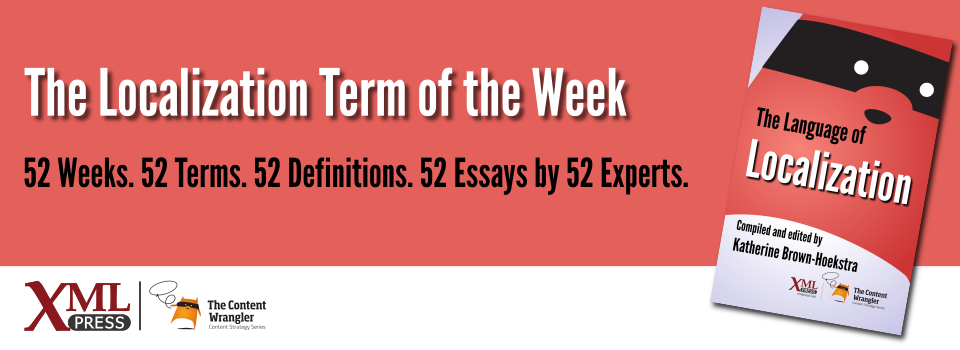Why is it important?
Reduces translation time and cost by reusing translated content from the repository. Translation memories are part of a client company’s intellectual property.
...continue reading "Term of the Week: Translation Memory (TM)"

Reduces translation time and cost by reusing translated content from the repository. Translation memories are part of a client company’s intellectual property.
...continue reading "Term of the Week: Translation Memory (TM)"
Phrase, sentence, paragraph, or sentence-like piece of text that represents a cognitive unit and is used when searching for a match in a translation memory (TM) database.
Discrete segments of text show up repeatedly across various pieces of text. Matching source segments in the TM for which previously approved translations exist increases efficiency in the translation process by providing the relevant translation to the translator.
A conventional set of symbols that visually represent sounds and ideas.
Scripts, or writing systems, are the framework for conveying meaning graphically, and all written words use some form of script. These systems are classified into three types: logographic, syllabic, and segmental[Daniels 1996][Nakanishi 1989]. Encoding standards such as ISO/IEC 10646, and Unicode, have been developed as a way of representing most, (but certainly not all), scripts in common use today[Unicode]. Of the 7,000+ languages spoken today, roughly a third are considered endangered. Many of these either don’t have scripts or are not supported.
The process whereby a human translator edits machine-translated output to achieve an acceptable level of quality in the final product.
Machine translation (MT) is frequently used in the translation industry because of its gains in speed and scale. Yet, there is often a loss in quality. Human post-editing improves MT output, bringing the quality up to acceptable levels.
Technical activities required to support the process of translation, including converting files to a translatable format, re-converting them to their original formats after translation, and ensuring technical validity of translated files.
Localization engineering is a key component of the localization process and often included as a cost item in estimates, but it is frequently misunderstood or misinterpreted.
...continue reading "Term of the Week: Localization Engineering"
The instance when a source segment that is submitted to translation is partially recognized as being similar to a source segment that has already been translated and exists in the translation memory (TM).
Fuzzy match is important for translation costs and efficiency. As a TM builds up a library of content, it will recognize more fuzzy matches, leading to reduced costs and increased efficiency.
The instance when a source segment that is submitted to translation is word-for-word the same as a source segment that has already been translated and exists in the translation memory (TM).
Exact matches save translation expenses. Once a segment has been translated, an exact match reduces the cost of processing that same segment again. In-context exact matches reduce costs even more.
The production of professional quality, print-ready materials using specialized software to design the layouts and templates. It has replaced manual typesetting and paste up as a discipline, and has evolved beyond desktop computers to include laptops, mobile devices, and the cloud.
DTP software is used to produce most printed documentation in circulation. It can be 50% of the cost of a localization project, so if the source files are poorly internationalized, this task can break a company’s localization budget[Esselink, 2000]. Properly implemented XML or other structure can significantly reduce DTP costs, but you still need skilled designers to create the output templates.
...continue reading "Term of the Week: Desktop Publishing (DTP)"
A translation process in which professional human translators use software programs, such as translation memory or terminology management tools, that support and facilitate productivity and accurate, consistent translations.
CAT tools provide workflow management and resource allocation and help human translators build and maintain translation memories. When implemented correctly, CAT tools significantly improve efficiency, quality, and consistency, which helps to reduce translation costs.
...continue reading "Term of the Week: Computer-aided translation (CAT)"
A defined list of grouped symbols used for digital communication.
All global text belongs to a particular character set. Digital programs and platforms expect a specific character set so that they correctly process, render, and visualize each character of the text.